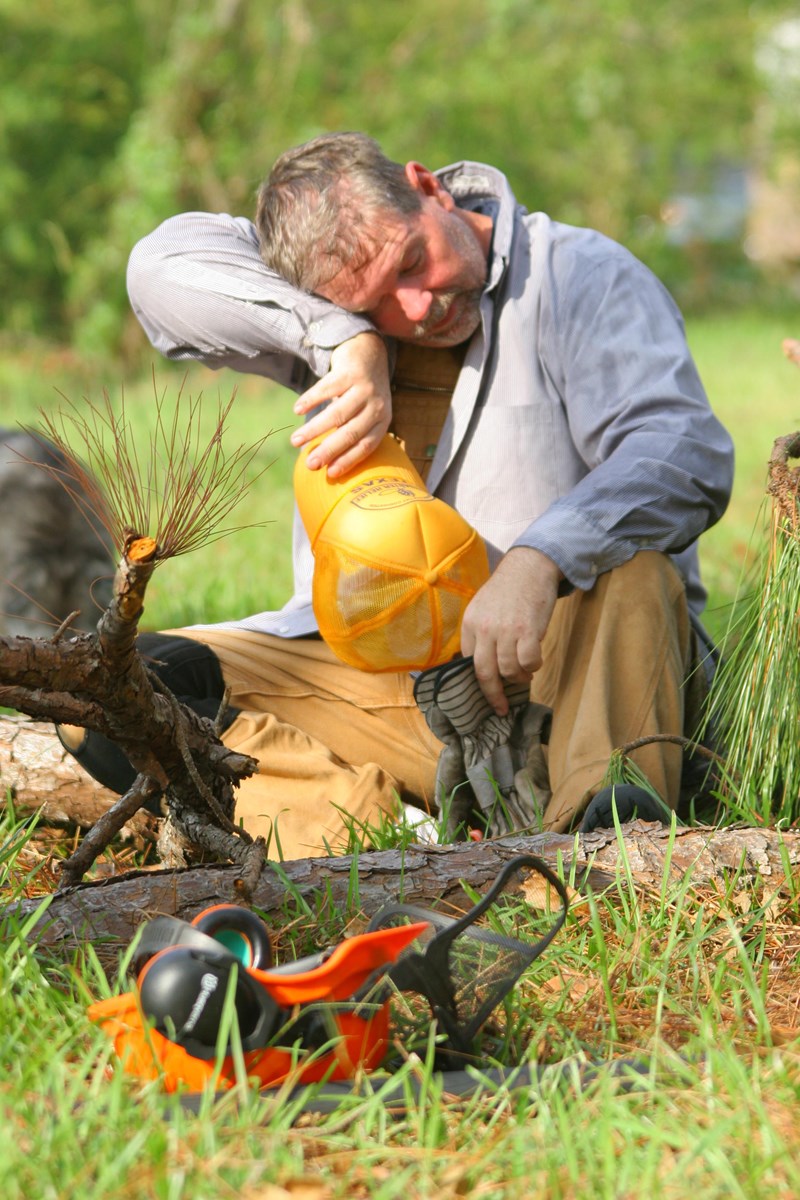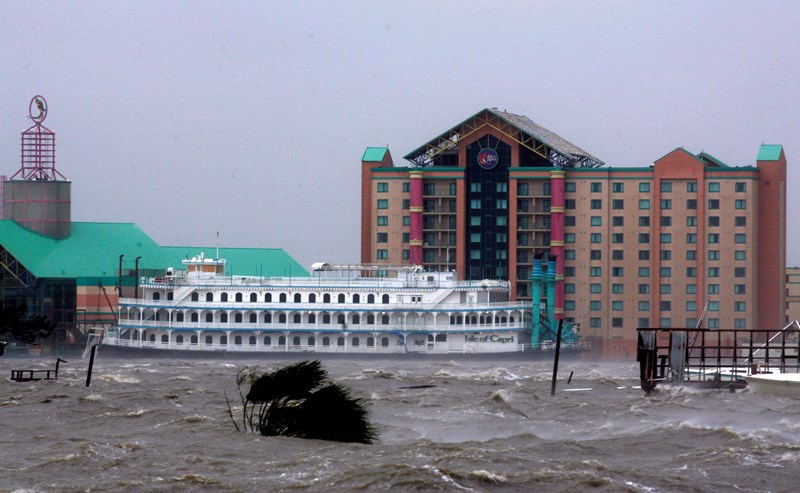Baptist disaster relief units expand to 2 fronts after Rita's landfall
ALPHARETTA, Ga. (BP)--Southern Baptists are assessing needs and assigning mobile disaster relief units to areas of Southeast Texas and Southwest Louisiana damaged during Hurricane Rita, while continuing to provide hot meals, clean-up and recovery services throughout the Gulf Coast.
“We’ve had people on the ground in the affected areas of Louisiana and Texas since the storm went through Saturday,” said Jim Burton, who coordinates disaster relief services for the North American Mission Board. “They are quickly assessing needs so we can assign mobile units today and tomorrow.
“Many of the mobile kitchens and cleanup and recovery crews that were staged at the end of last week just outside the anticipated path of the storm should be feeding hot meals, cutting up downed trees and providing communication and other services tomorrow,” Burton said Sept. 26. “We will ramp up the services throughout the week as needs become clearer and our mobile units assemble from across the country.”
While some communities along the Texas-Louisiana border were nearly wiped out, overall Hurricane Rita did not wreak the degree of havoc authorities had feared along the already-devastated Gulf Coast region Sept. 24.
Rita, at one time a powerful Category 5 storm that followed on the heels of Hurricane Katrina, made landfall as a weaker Category 3 with winds of 120 mph near Sabine Pass, Texas.
One of the hardest-hit areas was Louisiana’s Cameron Parish, where authorities estimate 90 percent of the homes were destroyed and water reached 15 feet high, according to CNN.com. Lake Charles, La., also suffered severe damage from Rita as floodwaters from the Gulf of Mexico rushed into the city.
Houston was spared the extreme damage experts had feared, and authorities were pleased that residents heeded warnings and evacuated the city as Rita approached. Officials divided the city into quadrants and assigned times for residents in each area to return to their homes in order to avoid the 15- to 20-hour traffic jams that occurred on some Texas roads as Houston and Galveston were evacuated.
An estimated 6,000 Southern Baptist Disaster Relief volunteers from 38 state conventions have served in Louisiana, Mississippi, Alabama, Georgia and Texas following Katrina and Rita. A total of 260 SBC mobile disaster relief units have been utilized so far, including 56 mobile kitchens, 32 shower units, 36 recovery units and 22 chain saw units have been deployed to affected areas. As of Sept. 26, 198 units were still on site and a record of more than 4.8 million meals had been prepared by Southern Baptist relief workers.
Southern Baptist volunteers prepare most of the meals distributed by the American Red Cross as well as provide cleanup and recovery, communications, childcare and other vital disaster services. Southern Baptists are the third-largest disaster relief operation in the country behind the American Red Cross and The Salvation Army, with more than 30,000 trained volunteers on call for local, state and national emergencies.
A webcast briefing about Southern Baptist Disaster Relief efforts is available at www.namb.net. Disaster relief information is posted regularly at www.NAMB.net/dr.
Contributions to offset direct costs of the disaster relief response may be sent to state conventions, associations or churches responding to the effort or to the Southern Baptist Disaster Relief Fund. Donations to Southern Baptist Disaster Relief may be made online at www.namb.net or by calling 1-888-571-5895. Alternately, contributions can be mailed to the Southern Baptist Disaster Relief, North American Mission Board, Box 116543, Atlanta, GA 30368-6543.
“As bad as it could have been, we came out of this in pretty good shape,” Texas Gov. Rick Perry said after Rita’s landfall, calling the lack of widespread fatalities “miraculous.” Officials credited the evacuation of 3 million people with saving many lives, the Associated Press reported.
Even so, the hurricane was a bad one across the Louisiana border for residents of Cameron, Creole and Lake Charles. In Creole, 70 percent of the homes were destroyed, officials estimated, and in Lake Charles, the city was without power, sewer systems, open stores and gasoline stations, CNN.com said, and downed trees and power lines made conditions treacherous.
“In Cameron, there’s really hardly anything left,” Louisiana Gov. Kathleen Blanco said. “Everything is just obliterated.”
In Sabine Pass and Port Arthur, Texas, rescuers were conducting house-to-house searches for survivors.
In New Orleans, waters breached a levee near the Lower Ninth Ward, which was overtaken by flooding after Hurricane Katrina. The area had been pumped dry after the levee was repaired just before Rita delivered a second punch. But authorities said the second flood affected areas that were already ruined and evacuated and the water could be pumped out within a week.
Two deaths have been attributed directly to Rita. One was a person killed in north-central Mississippi when a tornado spawned by the hurricane overturned a mobile home, AP reported, and the other was an east Texas man struck by a falling tree. Two dozen people were killed when a bus carrying elderly evacuees exploded outside Dallas before the storm.
Fortunately, the remnants of Hurricane Rita did not hang over eastern Texas and western Louisiana for days as was once expected. The storm moved northeast rather quickly, failing to dump tremendous amounts of rain on the region of the country that needed it least.
But Rita’s remnants did produce a tornado that swept through the campus of Mississippi State University in Starkville where classes were cancelled Monday to allow for cleanup. The twister was one of at least 14 reported in Mississippi Sunday, according to AP.
After the storm, New Orleans Mayor Ray Nagin resumed his plan to allow residents to repopulate some areas of the city. Before Rita, his intentions had been controversial because federal officials feared it was still unsafe for residents to return.
New insured loss estimates after Rita range from $2.5 billion to $7 billion, according to CNN.com.
With reporting by Martin King & Erin Curry.

















